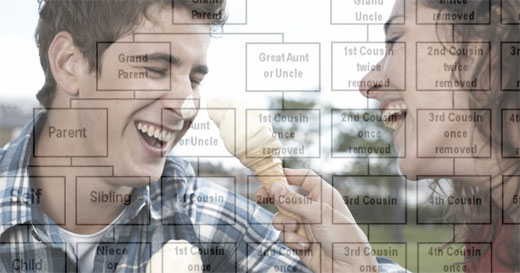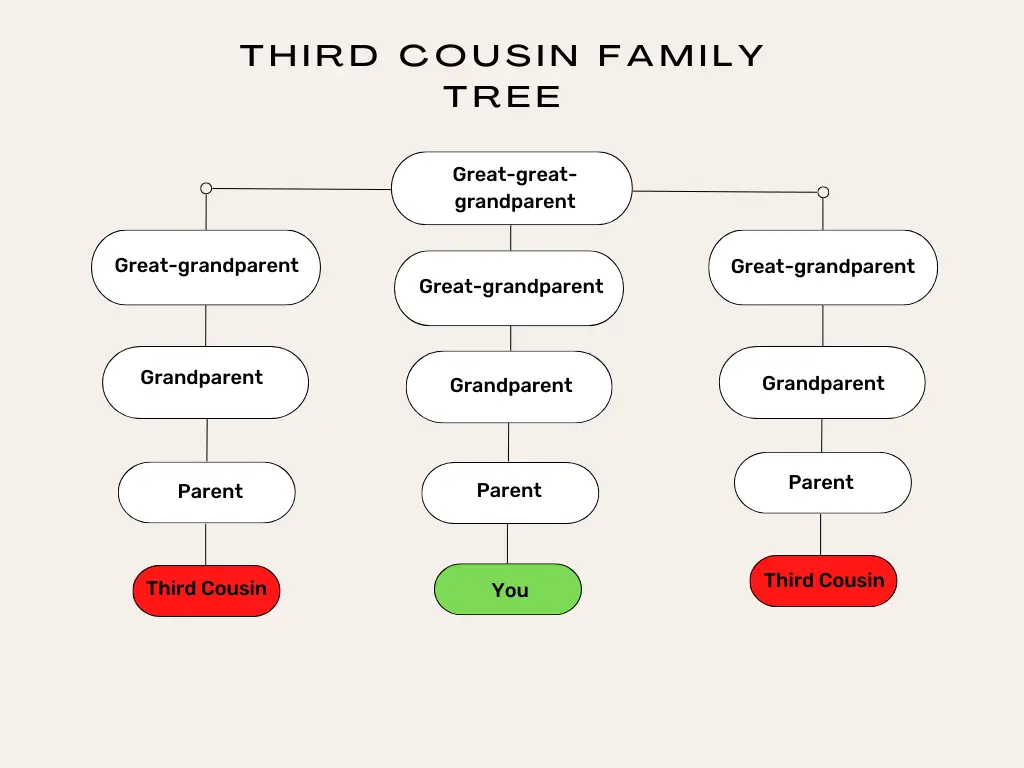A study finds why marrying a close-but-not-too-close cousin is the right move.
This website is unusually popular with the pro-cousin marriage crowd.
In April of 2009, I published a list of 11 State Laws About Marrying Your Cousins, From Strictest to Loosest. It wasn’t the best way to present the material, but because of the social stigma attached to it, many individuals seek information and resources on the subject.
Some cultures consider it taboo, while others allow and even encourage it. Despite the controversy surrounding this type of marriage, I’m highlighting some facts based on research on why you should consider marrying your third cousin if ever you fall in love together.
So today, I’m going to lean in on my cousin marriage popularity rather than neglect it.

What is a third cousin?
In the family genealogy, a third cousin is someone who shares a great-great-grandparents with you.
To get a better glimpse of where in the family tree your third cousins are, picture this in your head. Let’s focus on your mom’s side first, but this applies to your dad’s as well.
Think of your mom, then your mom’s mom (grandma), your grandma’s mom (great grandma), and finally, your great grandma’s mom or parents. They are, what you call, your great-great-grandparents.
Now imagine a similar tree but instead of your grandparents and great-grandparents, it’s one of your great-great-grandparent’s children!
Confusing, isn’t it? That’s why cousin marriage is a bit tricky. But this chart below will clear your head.

Cousin marriage study
Even though marriage laws vary state from state, it is generally legal in the U.S. to marry a cousin who’s your second cousin or further. But according to a study out of the University of Iceland in Reykjavik, it’s not just legal, it’s smart!
This is based on a study of more than 160,000 couples who were born in the 1800s, and spanning over two centuries. The research used the deCODE Genetics genealogical database, which is a comprehensive repository of genetic and genealogical data on over half of Iceland’s population.
And you’ve got to trust Iceland to really know their cousin marriage stuff. Being the country with the lowest population, people are at *such* a risk of inbreeding in Iceland that couples check their names in a database before they get married. This is to make sure they’re far enough away from each other genetically.
Benefits of Marrying Your Third Cousin
While some people argue that cousin marriage is a taboo and a recipe for genetic defects in offspring, they are actually only half right – but only up to the second degree! This study from Iceland will shake that belief.
The researchers found that the third or fourth cousin isn’t just safe to marry — they’re your ideal partner. They are far enough in the roots to avoid the inbreeding risks of closer cousins, but your genes are just close enough that they naturally work well together.
Additionally, third and fourth cousin marriages are an optimal choice for reproduction because they have the “best of both worlds.” They have a sense of familiarity within the clan and shared family values. This leads to stronger family bonds.
Lastly, while couples who are far-removed from each other could have genetic incompatibilities, third cousin couples have lower risk of genetic disorders. This therefore leads to increased chances of having healthy children.
And as a result, marriages between third and fourth cousins produce more children and grandchildren than other couples. This proves how serious Iceland is in pumping their population.
So go start shaking those branches on the other side of the family tree and see what falls out.

How much DNA do third cousins share?
The actual percentage of shared DNA can vary between third cousins, depending on the specific genetic variations. On average, they share 0.78% of their DNA with each other.
This amount is actually relatively low and falls within the range of distant relatives. Compare this with 50% DNA shared with your siblings, 12.5% with your first cousin, and 3.125% for second cousins. The further you are from your common ancestors, the less DNA you share with them.
Also, and we’re going to diverge from the study here and just talk like buddies. Once you get to a third or fourth cousin, things get less “creepy” than you’d think. That sounds like a close relative, but it’s really not.
A third cousin is someone who only shares great-great-grandparents with you. It’s the child of one of your parents’ second cousins. Your fourth cousin only shares your great great-great-grandparents.
Dating your cousins
There’s a good chance you have third and fourth cousins you’ve never even met. As I’m writing this, I couldn’t name a single one of my third or fourth cousins. Not that I want to marry any of them, I promise; just to illustrate the point.
You may’ve accidentally dated one already. That’s enough distance that the old joke “you’d save money on wedding invites if you married your cousin” barely rings true; the overlap probably isn’t that significant.
That being said, your third or fourth cousins are juuust close enough that dating one will be at least a somewhat rebellious gesture against your parents — it’s “best of both worlds” in that way too.

So, can you marry your third cousin?
It’s settled. With the research study, genealogy, benefits, and shared DNA combo, the evidence points that you should marry your cousin.
It’s not uncommon to hear stories about couples who got married, had healthy children, and only later discovered that they were third cousins after attending a family or clan reunion. There are also cases where couples on the verge of tying the knot, realize that they are blood-related but still decide to push the boundaries.
Go track down your third or fourth cousin and go out for a cuisine that doesn’t match your heritage, just to avoid potentially awkward conservation about old family recipes.
Famous people who married their third cousins
And finally, here are some notable people who’ve married their third cousins:
- John Adams
- Charles Darwin’s grandparents (and then Darwin married his first cousin)
- Queen Elizabeth II
- Rudy Giuliani
- Thomas Jefferson
- Robert E. Lee, and Jerry Lee Lewis.
Look, there are some low cards in that deck, but the point stands.